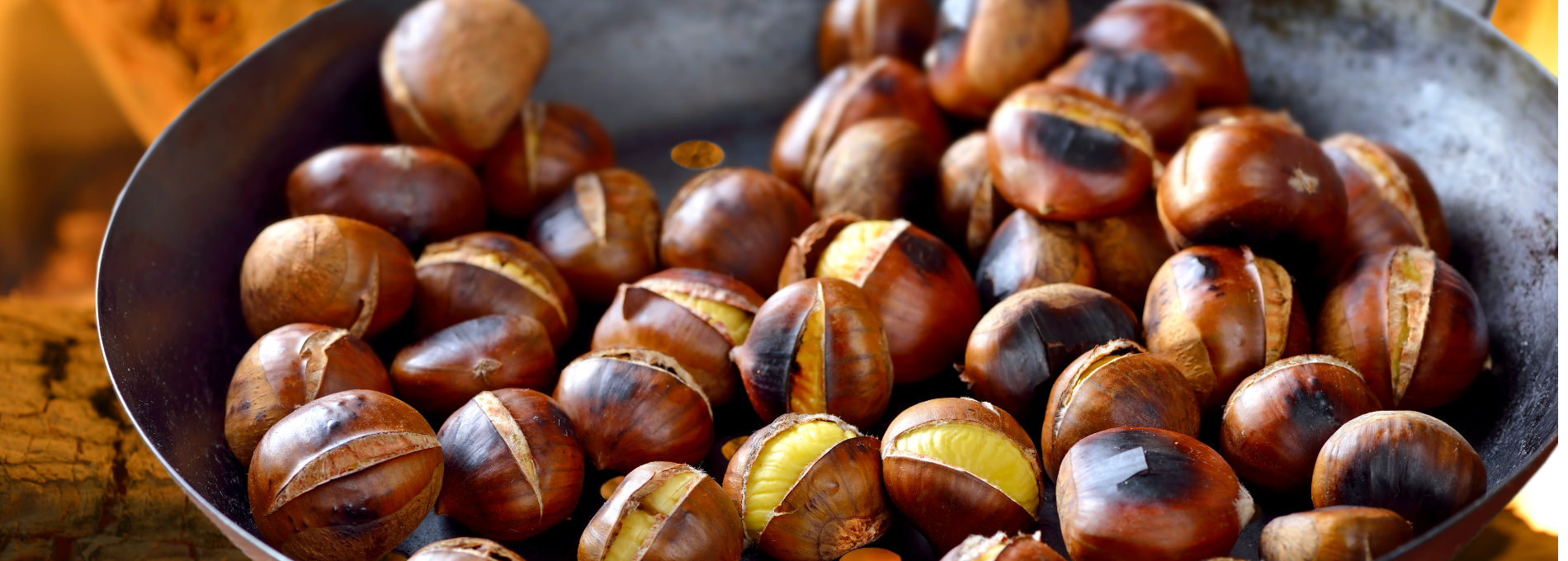Autumn is also chestnut season here in South Tyrol!
The Valle Isarco, around Lake Caldaro and also up the Adige Valley are criss-crossed with striking chestnut groves. Did you know that chestnut trees can live 500 to 600 years? Some specimens even reach up to 1,000 years. They are up to 35 metres high. At the end of September, when autumn arrives, the prickly fruits are ripe and we are happy to eat them.
Chestnuts make you happy!
The Keschtn, as chestnuts are called here, are an integral part of the traditional rural cuisine of South Tyrol. And it has now even been scientifically proven that the chestnut is rich in starch, but also in nutrients and vitamins. For example, chestnuts have a positive influence on serotonin levels, the so-called “happiness hormone” in the body. They are also gluten-free and allergy sufferers can therefore also rejoice.
Roasting chestnuts – this is how it’s done!
Traditionally, the simplest and most common way to prepare chestnuts is to roast them over an open fire or cooker. Since we assume that you do not cook over an open fire in your kitchen, here is the preparation in the oven for you:
If you want to roast the chestnuts, cut them crosswise on the curved side and place them in an ovenproof dish. Then roast the chestnuts in the oven at 200 °C for 20 minutes until the shells crack open.
Take the chestnuts out of the oven and wrap them in a damp cloth to let them cool down a bit. Then you can remove the shell and the brown skin.
When shopping, make sure you buy about 20% more than the amount given in the recipe because of the shell. Or do you have chestnut trees in your area and can even collect them yourself, like we do here?
Roasted Keschtn are an indispensable part of Törggelen and are served with apricot doughnuts for dessert. Sounds delicious, doesn’t it?
What also tastes very good is chestnut jam. Have you heard of it? Try it!


